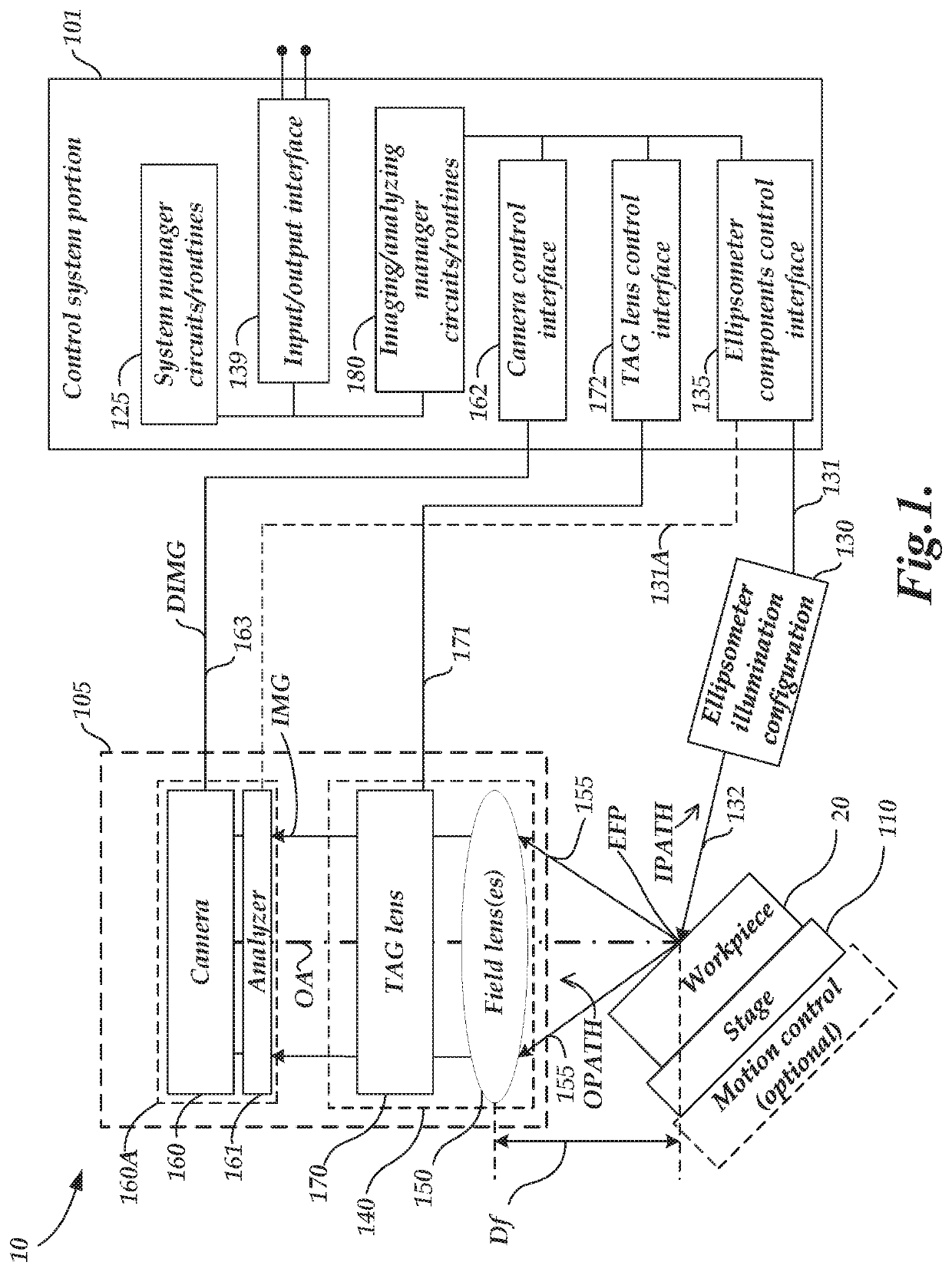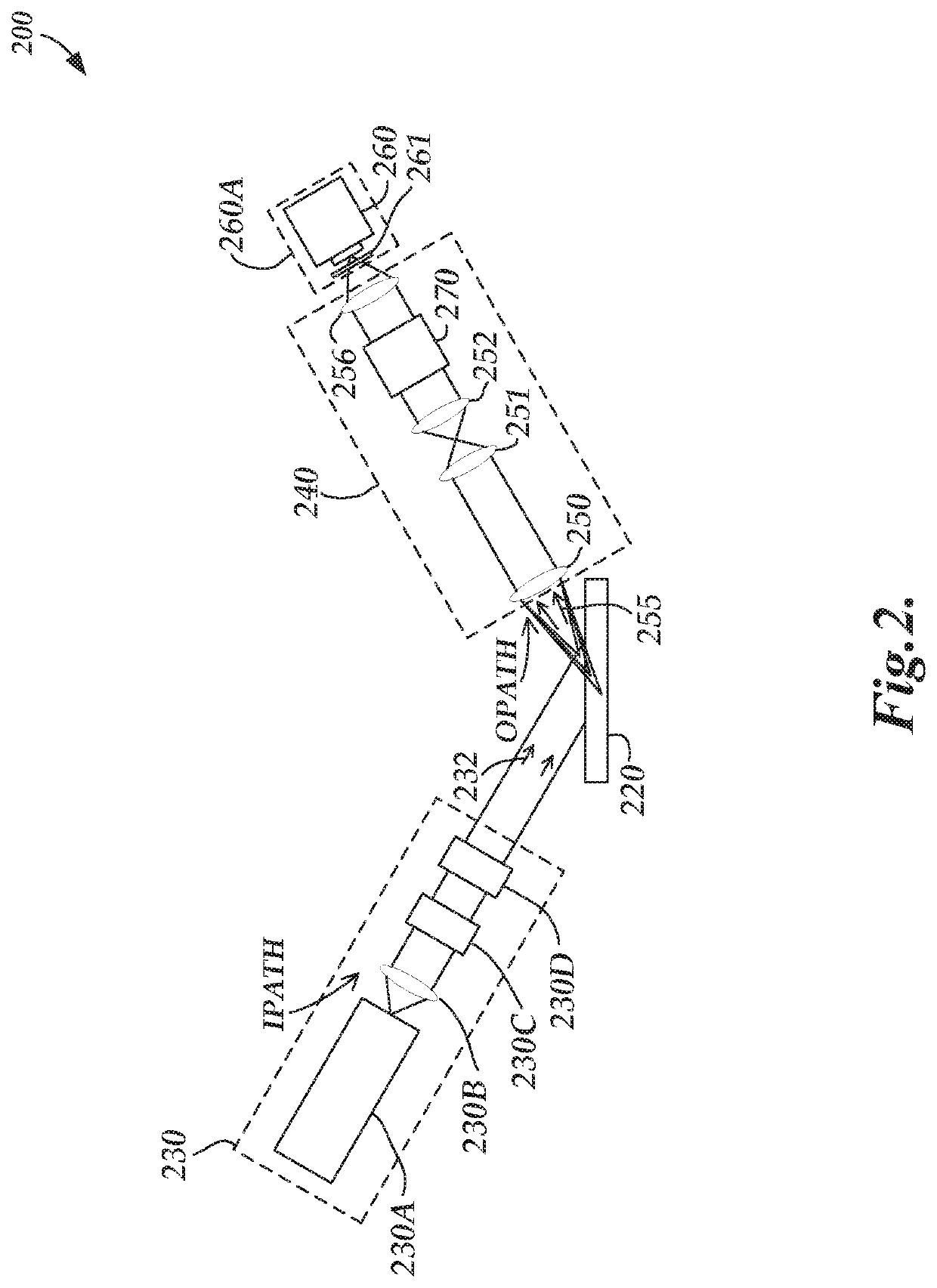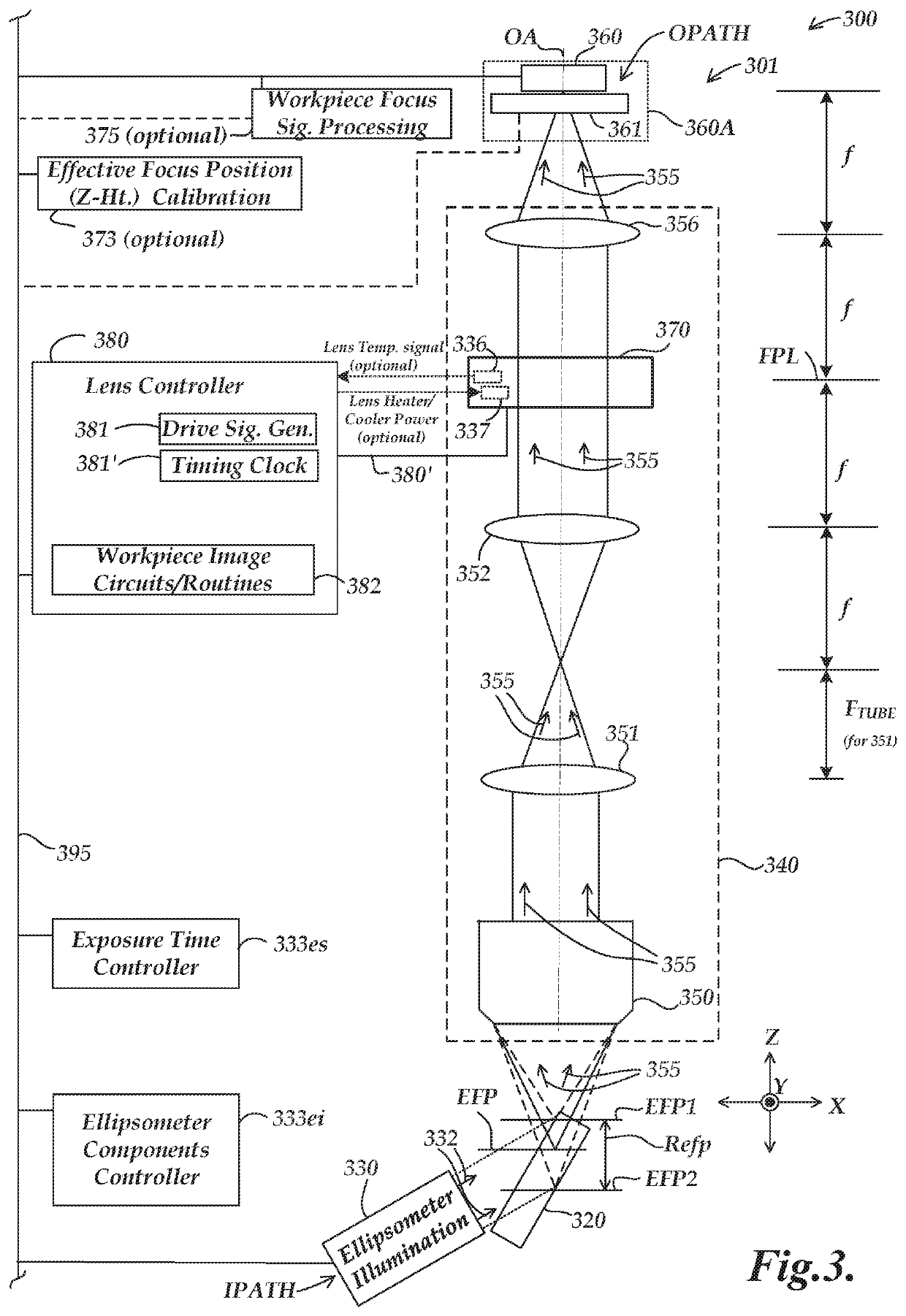Imaging ellipsometer system utilizing a tunable acoustic gradient lens
a gradient lens and ellipsometer technology, applied in the field of precision metrology, can solve the problems of affecting repeatability and/or accuracy, affecting the repeatability and/or accuracy of motorized focusing mechanism scanning techniques, and certain optical components, such as analyzers, may include unique defects
- Summary
- Abstract
- Description
- Claims
- Application Information
AI Technical Summary
Benefits of technology
Problems solved by technology
Method used
Image
Examples
Embodiment Construction
[0014]FIG. 1 is a block diagram of an imaging ellipsometer system 10 including an optical imaging system 105, an ellipsometer illumination configuration 130, a workpiece stage 110 and a control system portion 101. In various implementations, the imaging ellipsometer system 10 may be adapted to a host system (e.g., machine vision), or used as a standalone system, and may be operated according to principles disclosed herein and in the incorporated references. The imaging ellipsometer system 10, including the optical imaging system 105, the ellipsometer illumination configuration 130, and the workpiece stage 110, may generally be controlled by the control system portion 101 to inspect and / or image a workpiece 20.
[0015]The optical imaging system 105 includes a camera 160, an analyzer 161 (e.g., comprising a polarizer), one or more field lenses 150 (e.g., including an interchangeable objective lens), and a tunable acoustic gradient (“TAG”) lens 170. A brief background is described below ...
PUM
| Property | Measurement | Unit |
|---|---|---|
| angles | aaaaa | aaaaa |
| angles | aaaaa | aaaaa |
| angles | aaaaa | aaaaa |
Abstract
Description
Claims
Application Information
 Login to View More
Login to View More - R&D
- Intellectual Property
- Life Sciences
- Materials
- Tech Scout
- Unparalleled Data Quality
- Higher Quality Content
- 60% Fewer Hallucinations
Browse by: Latest US Patents, China's latest patents, Technical Efficacy Thesaurus, Application Domain, Technology Topic, Popular Technical Reports.
© 2025 PatSnap. All rights reserved.Legal|Privacy policy|Modern Slavery Act Transparency Statement|Sitemap|About US| Contact US: help@patsnap.com



